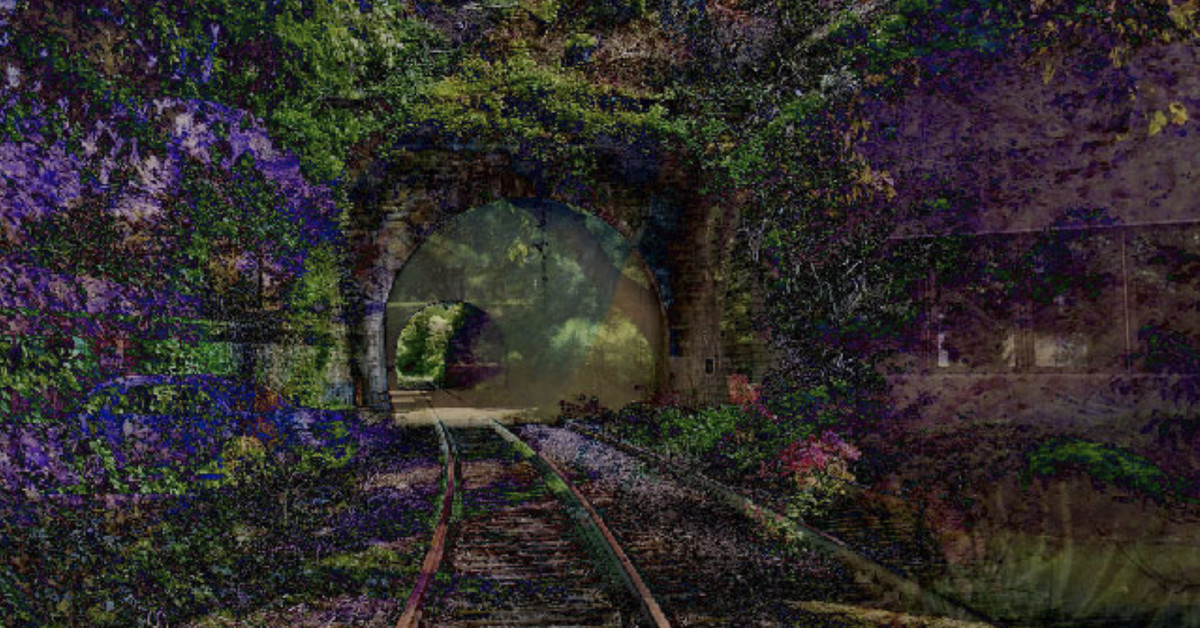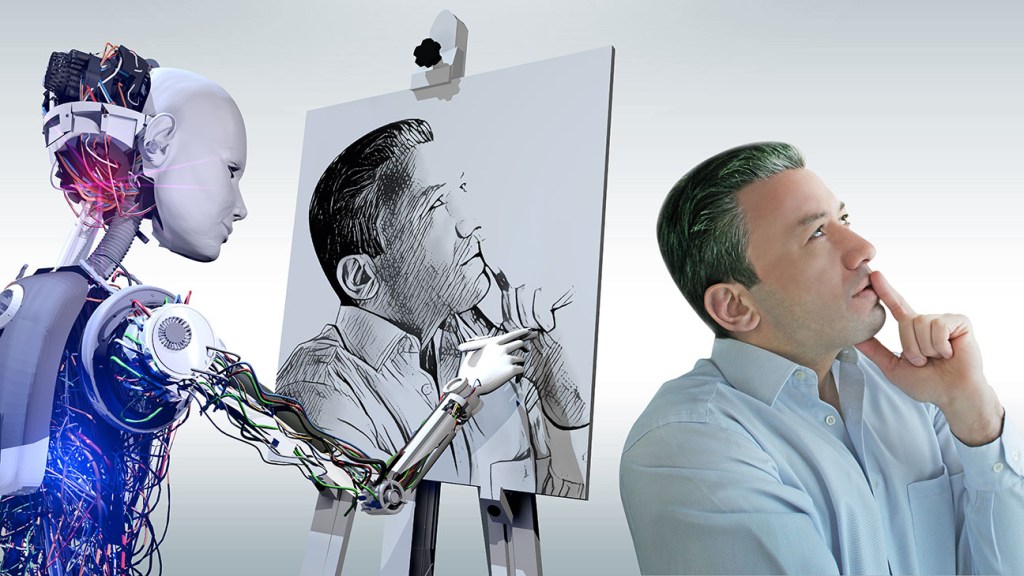And this is exactly what I thought would happen: AI-generated content flooding the online market to the point where it is almost impossible to find anything by a human anymore. (Article forces you to sign up for spam, so I'll repost it here):
Bizarre AI-generated products are in stores. Here’s how to avoid them.
AI-generated coloring books, plant guides and home goods are filling online stores as sellers try to make a quick buck
There’s something off about the black and white drawings in “Floral Whispers, Coloring Book for Women.”
At first glance, the book is just 26 pages of beautiful women with impressive bone structure, surrounded by or covered in flowers. But look closer and you’ll see that some don’t have the right number of fingers, or the fingers are elongated to create spooky alien hands.
The $7.95 paperback by author “Der Vive,” available on
Amazon, has all the hallmarks of being generated by artificial intelligence. It’s self-published by an unknown author with no internet history. There are no reviews, and it was only listed in the past few months. The images all have some kind of distortion or oddity that is typically associated with AI, such as incorrect body proportions and at least one mix-up between a flower and a breast.
Easily accessible artificial intelligence is changing how we communicate,
work and create. Now, it is infiltrating e-commerce as AI-generated self-help books, mugs, wall art and coloring books proliferate in online marketplaces such as Amazon and Etsy. The third-party sellers aren’t required to disclose what is AI-generated, and it can be nearly impossible to confirm if something is AI just by appearance. The end result is even more scam products in the already confusing online-shopping landscape. For consumers, that can mean accidentally buying something of low quality or even hurting the livelihood of real artists.
“This is a grift,” said Henry Ajder, a researcher and expert on generative AI and deepfakes. “This is just an extension of practices that have existed for a long time. Previously it might have been people stealing other people’s artwork and putting it on T-shirts, plagiarizing a book. This is very much the same model with people using AI.”
What’s wrong with buying AI-generated goods?
There are people, even artists, making AI-generated products or things who are transparent about the process. Other items may not disclose their origins but are so obviously made by AI that it leaves little doubt and even adds to the allure.
“I think the novelty aspect and the uncanny strangeness of AI art can make it very appealing to some people,” said Britt Paris, an assistant professor at Rutgers University who studies AI and deepfakes. “I could see people, in the beginning, wanting some sort of freaky-looking art to put on the wall and brag about the fact that it’s made from AI.”
However, in situations where AI’s involvement is not obvious or desired, a product can be a scam, outright fraud and even dangerous, experts say. The sellers are often using AI to cut down on costs and time and to capitalize on popular categories of goods for easy revenue.
Copyright and intellectual property issues around AI are still in the air. The most popular generative AI tools such as OpenAI’s ChatGPT, image-generator Dall-E, Google’s Bard and Stability AI’s Stable Diffusion, were trained on content scraped from the internet, including copyrighted images and writing. Original creators — writers, illustrators, artists, reporters and photographers — say they are not being paid or credited for their work.
AI can even be used to impersonate specific creatives.
Many image generators have been used to create art in the style of Polish artist
Greg Rutkowski, who makes elaborate fantasy landscapes and has spoken out against AI tools. Author Jane Friedman
discovered multiple books published on Amazon that used her name and mimicked her writing style. She believes the books, which have been removed, probably used AI that had been trained using her writing to sound like her and profit off her brand.
When it comes to books, incorrect information can be dangerous. Amazon recently removed a guide on foraging for mushrooms that some readers claimed was generated by AI and could have given incorrect advice about what mushrooms were edible or poisonous.
“The accuracy problem is real,” said Ravit Dotan, an AI ethics researcher and adviser. “People don’t understand that textual generated AI is not optimized to generate truth. It’s optimized to generate text that’s compelling.”
What can be done about AI products?
AI-generated content is not banned at any of the big e-commerce companies that use third-party sellers, including Amazon and Etsy. And as of now, none require any kind of label or disclosure on products that were made primarily using AI tools. The tech companies behind the tools being used to make the words and images aren’t required to label things either.
The Authors Guild, which represents many authors whose work has been used to train AI tools, is asking for legislation and pushing companies to disclose when a book is written by AI.
“We see it as consumer protection, but it’s also a way to insulate the book marketplace because otherwise, you’ll just see an influx of AI-generated content on a platform like Kindle,” said Mary Rasenberger, chief executive of the Authors Guild. “It will take away from the market [demand] for human creative works.”
Rasenberger said that she doesn’t think AI can be held off forever and even sees a place for it as a useful tool for writers. The guild’s goal is to make sure AI is regulated, licensed, legitimate, with money going back to authors, she said.
Amazon
added a requirement earlier this month that any self-published books that use Kindle Direct Publishing tell Amazon when they are AI-generated. However, as of now, that information is not being shown to shoppers. For consumers, that is a big risk.
“Amazon is constantly evaluating emerging technologies and is committed to providing the best possible shopping, reading, and publishing experience for authors and customers,” Amazon spokesperson Ashley Vanicek said in a statement. “All publishers in the store must adhere to our content guidelines, regardless of how the content was created. We invest significant time and resources to ensure our guidelines are followed, and remove books that do not adhere to these guidelines.”
(Amazon founder Jeff Bezos owns The Washington Post, and the newspaper’s interim CEO, Patty Stonesifer, sits on Amazon’s board.)
Etsy said that it is also monitoring the new technology but that it has no rules against selling things made primarily with AI. The company says those products will be subject to the same quality standards as other listings. Walmart did not reply to a request for comment.
A number of tech organizations also are rushing to create tools to identify AI output, Dotan said. For example, Google recently announced it was working on
a watermarking tool that would be invisible to the human eye.
How can you tell what is AI?
So what can a shopper do? Until there are laws and labels, figuring out what’s AI-generated and what’s just a weird T-shirt design falls to the buyer. It is not a new role for anyone
who has shopped online in the past 10 years. Stores with third-party sellers are awash in knockoffs and poor-quality options, and once-helpful tools like reviews are often overrun with fake positive posts.
As with all scam products online, you will need to fall back on some old-fashioned detective work. AI-generated text and images do have some common tells, but they are not foolproof — especially at the speed AI image and text generators are increasing in quality. (“There are tools today that presume to detect when text is AI-generated, but they’re not reliable at all,” Dotan said.)
Start by looking through all available product images, including inside page previews for books, and zoom in or read the small print. For images, look at the backgrounds, which can often show more errors than the main subject. If there is a person depicted in the art, look at the hands, ears, eyes and general proportions to see if anything is unusual. Always count the fingers.
When trying to determine if a photo or illustration is AI-generated, look at the eyes to see if they match. (Washington Post illustration; Heather Kelly/The Washington Post/TWP)
For text, look up the author and see if there is any kind of social media presence. Being a self-published author is not a sign something is AI, but books churned out by AI will typically be independently published. The descriptions are frequently created with AI chatbots, so read closely to see if they make sense and are describing the listed product. Check the page count to see if the length makes sense.
“I would look for tells that it is very new in the store and that it seems to imitate something that is very popular and older from a known publisher,” said Jacob Metcalf, program director of the “AI on the Ground” initiative at the nonprofit Data & Society. “A pattern I found was the scammers are using common tropes from popular books.”
Thoroughly research the sellers, looking at their other products, business names and how long they’ve been around. Read more in this
guide to avoiding scams when shopping online.
For our likely AI-generated coloring book, the author was unknown, the images were filled with errors, and the full title was a long attempt to capitalize on keywords: “Floral Whispers: A Coloring Adventure for Women A Tribute to Femininity and the Enchanting Beauty of Blooming Florals — An Artistic Honoring of Women and Floral Magic.”
Anyone who does just want to color women and flowers would probably be disappointed.
“Whatever AI generates, it will never be as good as human-created stuff. Not if you want anything with voice, meaning, or expression,” said Rasenberger of the Authors Guild. “AI is always based on prior stuff, there’s not magic there. It’s just a blender.”
END OF ARTICLE
-------------------------------------
And down the rabbit hole we go. This genie has left the bottle, and increasingly, the question for buyers will not be whether it is AI-generated, but simply whether it is any good. As artists, we'll have to work out what, if anything, we can do that machines can not, or we are history. Legislation is not going to stop this train any more than it could stop the file sharing train.







